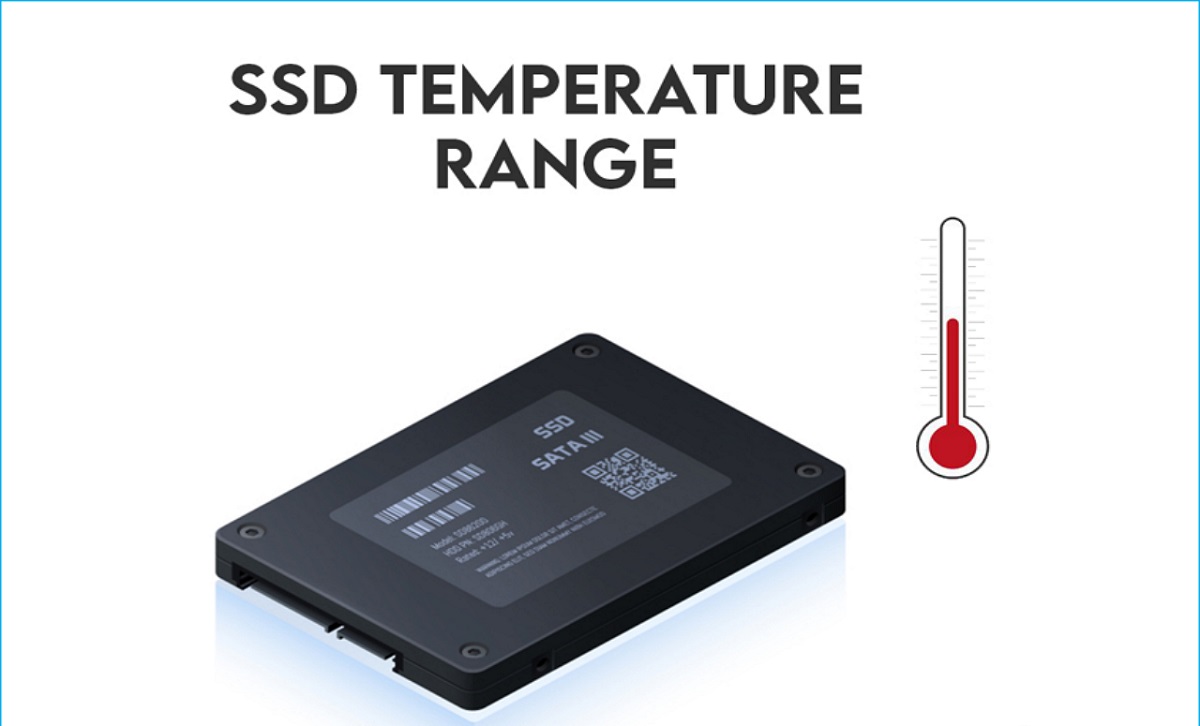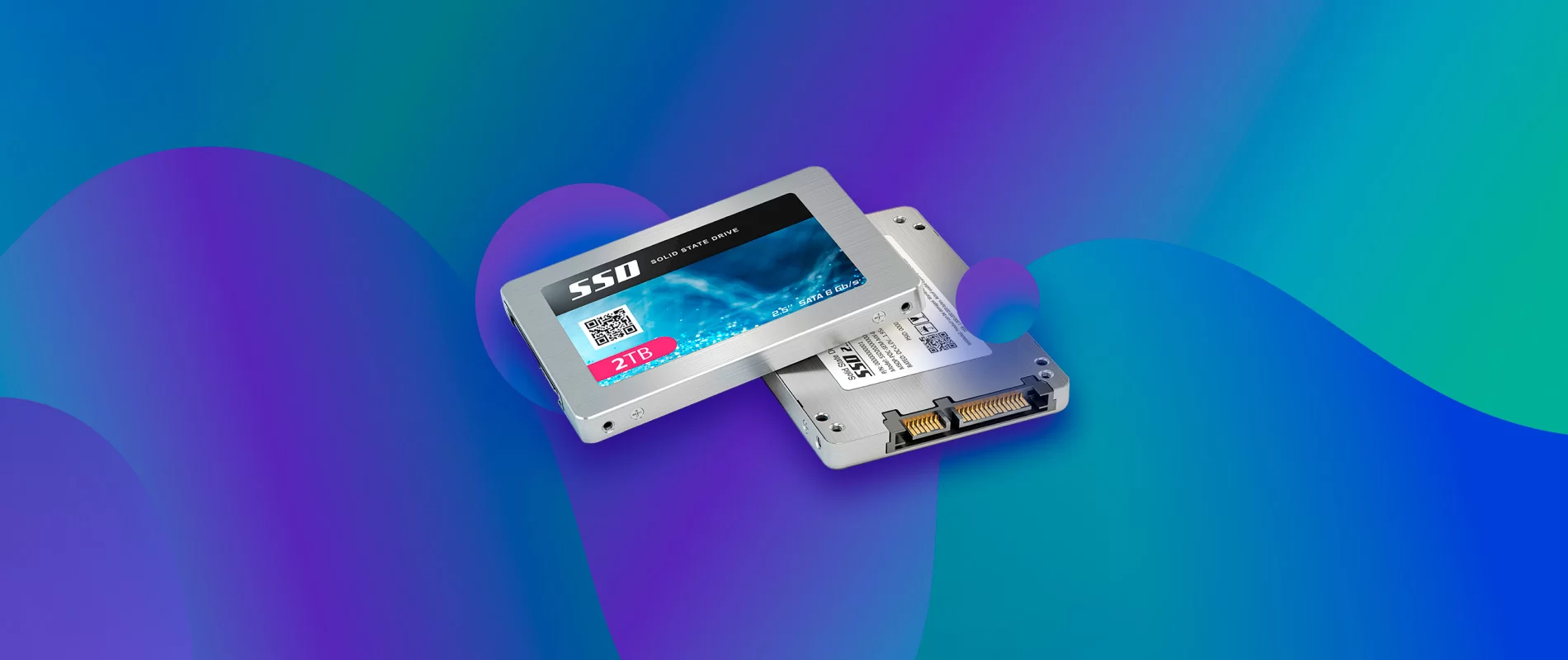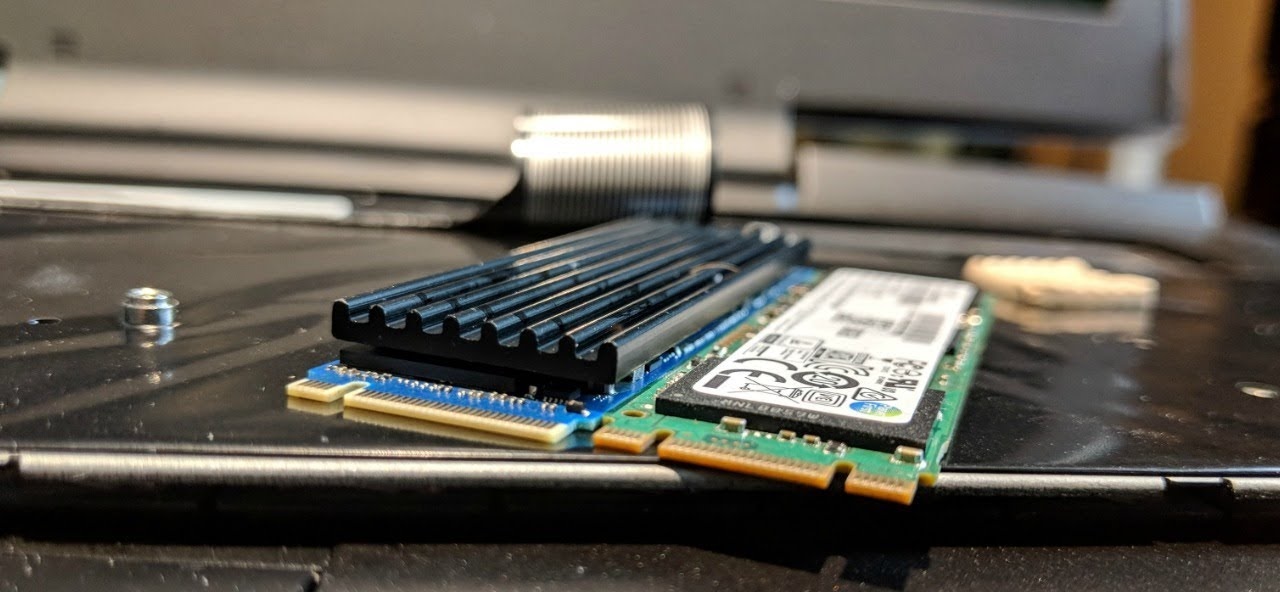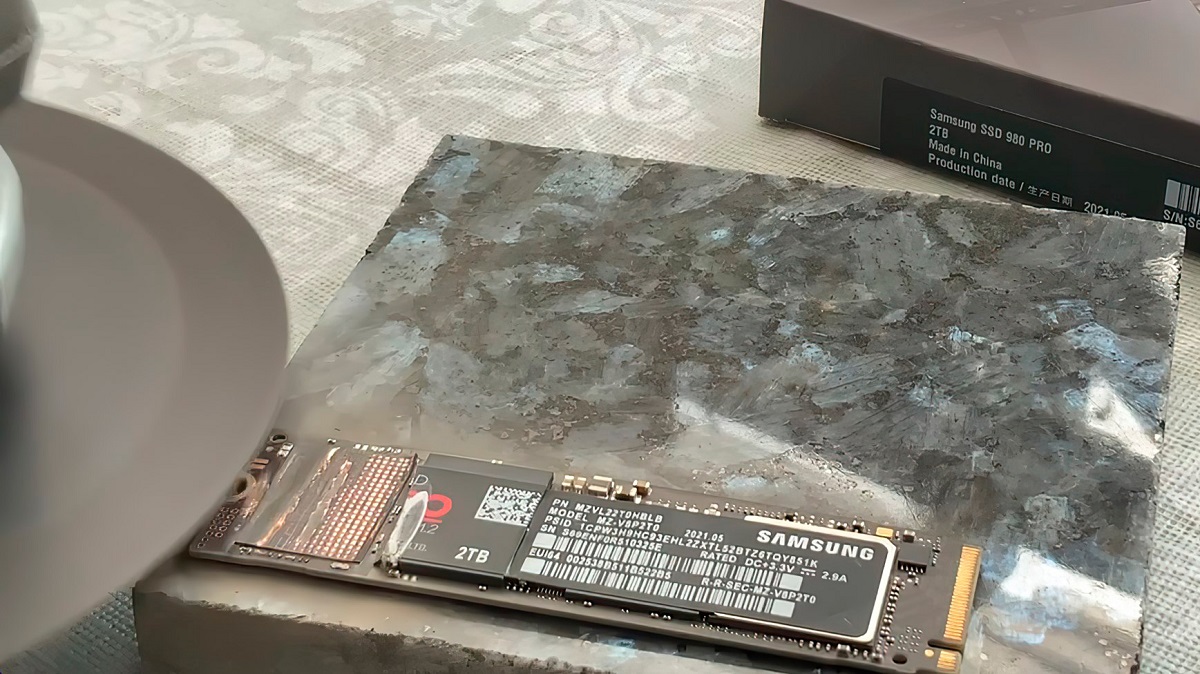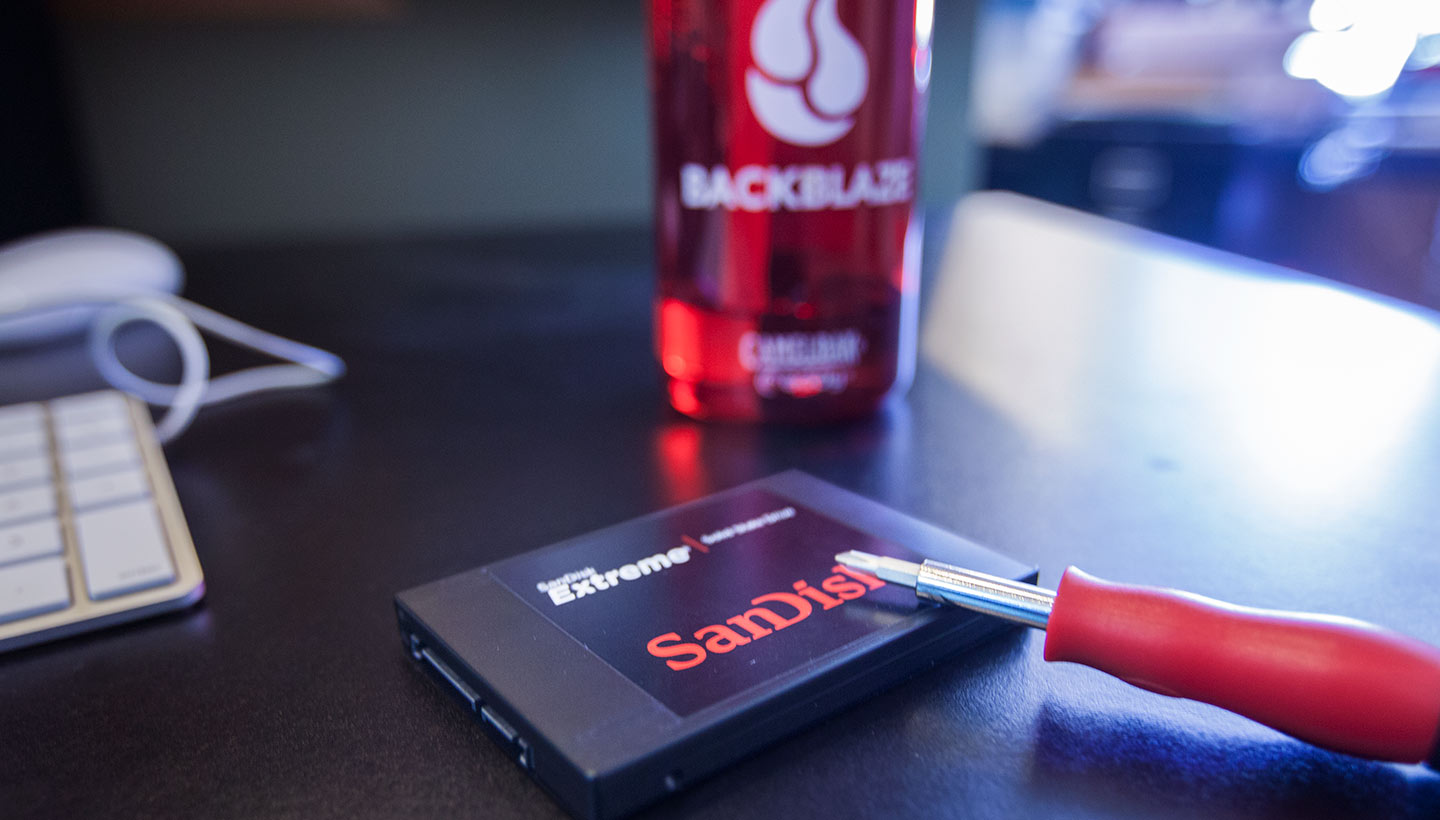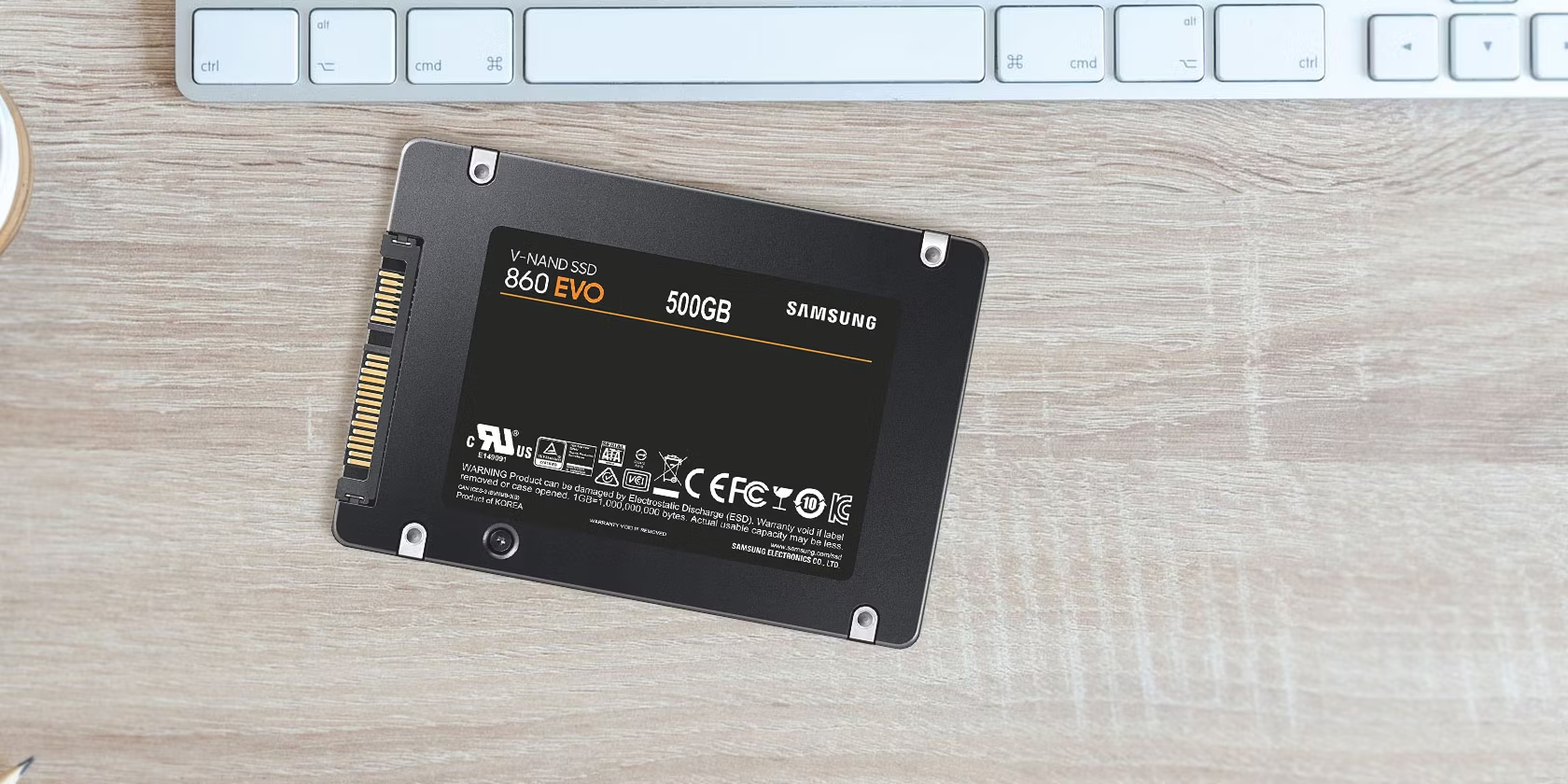Introduction
Welcome to our guide on SSD temperature! If you own a solid-state drive (SSD) or are considering getting one, understanding how temperature affects its performance and longevity is crucial. SSDs have become widely adopted due to their faster reading and writing speeds, lower power consumption, and overall reliability compared to traditional hard disk drives (HDDs). However, like any electronic device, SSDs are susceptible to temperature-related issues that can impact their functionality and lifespan.
In this article, we will explore the optimal operating temperature range for SSDs, the factors that affect their temperature, common signs of overheating, and tips for maintaining an appropriate temperature to ensure optimal performance. Whether you are a gamer, content creator, or simply an everyday computer user, having a clear understanding of SSD temperature management will help you make informed decisions regarding your storage device and potentially extend its lifespan.
So, if you are ready to dive into the world of SSD temperature, let’s explore the effects of temperature on these high-performance storage devices and discover the best practices for keeping them cool.
What is an SSD?
An SSD, or solid-state drive, is a storage device that uses flash memory to store and retrieve data. Unlike traditional hard disk drives (HDDs), which rely on spinning disks and mechanical parts, SSDs are based on non-volatile memory technology. This means that SSDs have no moving parts, allowing them to access data much faster and operate silently.
SSDs offer several advantages over HDDs. Firstly, their speed is significantly faster, resulting in quicker boot times, faster application launches, and improved overall system responsiveness. This is because SSDs can access data directly, without the need for mechanical movements to locate it on spinning disks.
Additionally, SSDs are more durable and less susceptible to physical damage. Since they do not have moving parts, they are less likely to suffer from mechanical failures due to shocks, drops, or vibrations. This makes SSDs an ideal choice for portable devices such as laptops and tablets.
Moreover, SSDs consume less power than HDDs, leading to increased battery life in laptops and reduced energy costs in desktop computers. This makes SSDs environmentally friendly and cost-effective in the long run.
With the increasing demand for high-performance storage solutions, SSDs have become the go-to choice for consumers and professionals alike. From gamers seeking faster load times to professionals working with large files, SSDs deliver the speed and reliability required for modern computing tasks.
Now that we understand what an SSD is and the advantages it offers, let’s explore how temperature affects these cutting-edge storage devices.
How Does Temperature Affect SSDs?
Temperature plays a significant role in the performance and longevity of SSDs. While SSDs are generally more resistant to temperature fluctuations compared to HDDs, extreme temperatures can still have a considerable impact on their functionality.
Heat is the primary concern when it comes to SSDs. High temperatures can accelerate the degradation of the SSD’s flash memory cells, leading to reduced performance and a shorter lifespan. When exposed to excessive heat, the electrons in the flash memory cells become more active, which can cause data corruption and increase the likelihood of read or write errors.
On the other hand, extremely low temperatures can also affect the performance of SSDs. Cold temperatures can slow down the responsiveness of the SSD, causing longer boot times and overall system sluggishness. In extreme cases, the SSD may even fail to function until it reaches a more optimal temperature.
It’s important to note that most SSDs have built-in temperature monitoring mechanisms and thermal throttling features. These features help regulate the performance of the SSD based on temperature, ensuring that it operates within safe limits. When the SSD reaches a certain temperature threshold, it may reduce its speed to dissipate heat and prevent overheating.
Therefore, finding the right balance is crucial. Operating an SSD within the recommended temperature range helps maintain its performance, reliability, and lifespan. As a general guideline, SSDs should typically be kept at a temperature between 0°C (32°F) and 70°C (158°F), although specific manufacturers may have slightly different temperature specifications.
Now that we understand the impact of temperature on SSDs, let’s delve into the recommended operating temperature range for these storage devices.
Recommended Operating Temperature Range
For optimal performance and longevity, SSDs should be operated within a specific temperature range. While the exact temperature specifications may vary depending on the manufacturer and model, a general guideline for SSD operating temperatures is between 0°C (32°F) and 70°C (158°F).
Operating an SSD within this temperature range helps ensure that it functions properly without experiencing any adverse effects due to temperature extremes. Most SSDs are designed to handle a wide range of temperatures, providing reliable performance in various environments.
However, it’s important to note that prolonged exposure to temperatures outside this recommended range can impact the SSD’s performance and lifespan. Extreme heat can lead to accelerated wear on the flash memory cells, reducing their endurance and potentially causing data loss. Similarly, extreme cold can slow down the SSD’s performance and make it less responsive.
Keeping your SSD within the recommended temperature range is essential, especially if you operate your computer in an environment with challenging temperature conditions. In situations where the ambient temperature exceeds the recommended range, it is advisable to provide adequate cooling solutions to maintain the SSD at a safe operating temperature.
Now that we know the ideal temperature range for SSDs, let’s explore some of the factors that can impact the temperature of these storage devices.
Ideal Temperature for SSDs
While SSDs can operate within a wide temperature range, there is an ideal temperature at which they perform at their best. The ideal temperature for SSDs typically falls within the range of 25°C (77°F) to 45°C (113°F).
Operating an SSD at this ideal temperature ensures optimal performance, reliability, and longevity. At this temperature range, the SSD’s flash memory cells function optimally, allowing for faster read and write speeds and reducing the chances of data corruption.
Additionally, maintaining the SSD within the ideal temperature range can help prevent thermal throttling. When an SSD gets too hot, it may slow down its performance to dissipate heat and avoid overheating. This can result in reduced overall system performance.
On the other hand, operating an SSD at temperatures significantly below the ideal range can lead to decreased performance. Cold temperatures can slow down the responsiveness of the SSD, causing longer boot times and slower data transfers.
It is worth noting that achieving and maintaining the ideal temperature for an SSD can depend on several factors. The airflow within your computer case, the efficiency of your cooling system, and the workload you put on the SSD can all play a role in determining the actual temperature. Monitoring the temperature of your SSD using software tools can help you ensure that it stays within the desired range.
By keeping your SSD within the ideal temperature range, you can maximize its performance and extend its lifespan. In the next section, we will explore the factors that can impact the temperature of SSDs.
Factors That Can Impact SSD Temperature
Several factors can influence the temperature of an SSD. Understanding these factors can help you identify potential issues and take necessary steps to maintain an optimal temperature for your SSD. Here are some of the key factors that can impact SSD temperature:
1. Workload: The workload you put on your SSD can significantly impact its temperature. Running intensive tasks such as gaming, video editing, or rendering can generate more heat and cause the SSD temperature to rise. It is important to monitor the temperature during heavy workloads to prevent overheating.
2. Environmental Temperature: The ambient temperature of the environment where your computer is located can affect the temperature of the SSD. If the room temperature is high, it can contribute to increased SSD temperatures. Ensure that your computer is in a well-ventilated area and consider using additional cooling methods if necessary.
3. Airflow and Cooling: Proper airflow within your computer case is essential for maintaining optimal SSD temperature. Inadequate airflow can trap heat and cause the SSD to heat up. Ensure that your computer case has proper ventilation and that fans are working effectively. Additional cooling methods such as using CPU coolers or SSD heatsinks can help dissipate heat and keep the SSD temperature under control.
4. Placement and Enclosure: The placement and enclosure of your SSD can also impact its temperature. If your SSD is placed in an area with poor airflow or inside a tightly-packed enclosure, it may not dissipate heat efficiently, leading to higher temperatures. Consider the placement and enclosure design to promote better airflow and cooling for your SSD.
5. Overclocking: Overclocking your system components, including the CPU and GPU, can generate extra heat, which can affect the overall temperature inside your computer case. This, in turn, can impact the temperature of your SSD. If you have overclocked your system, ensure that your cooling solution is capable of effectively managing the increased heat.
6. SSD Design and Quality: The design and quality of the SSD itself can also play a role in its temperature. Some SSD models have better heat dissipation mechanisms or heatsinks integrated into their design, allowing them to stay cooler. Higher-quality SSDs may also have better thermal management features that help regulate temperature.
By considering these factors and taking appropriate measures like improving airflow, implementing additional cooling methods, or adjusting system configurations, you can effectively manage and control the temperature of your SSD. In the next section, we will discuss some common signs of overheating in SSDs.
Signs of Overheating in SSDs
Overheating in SSDs can have detrimental effects on performance and lifespan. It is important to be able to recognize the signs of overheating to take timely action. Here are some common signs that indicate your SSD may be overheating:
1. Performance Degradation: One of the first signs of SSD overheating is a decrease in performance. If your SSD starts to slow down, with longer load times or delays in accessing files and applications, it may be a result of overheating. As the temperature rises, the SSD’s ability to read and write data effectively can be compromised.
2. Frequent System Crashes: Overheating SSDs can lead to system instability and frequent crashes. When the temperature rises beyond a certain threshold, the SSD may fail to function properly, causing the system to crash or freeze. If you notice your system crashing more frequently, it may be an indication of an overheating SSD.
3. Unexpected Errors and Data Corruption: Overheating SSDs can cause data errors and corruption. When the flash memory cells in an SSD heat up excessively, they can become less reliable, leading to data loss or corruption. If you start encountering errors when accessing files or experience data loss, it could be a sign of an overheating SSD.
4. Unusual Noise or High-Pitched Sounds: Overheating SSDs may produce unusual noises or emit high-pitched sounds. The excessive heat can cause components within the SSD to expand and contract, resulting in audible vibrations or coil whine. If you notice any strange noises coming from your SSD, it is worth investigating further for potential overheating issues.
5. Physical Hotness: While SSDs generally do not become as hot as some other components in a computer, if you notice that your SSD feels unusually hot to the touch, it may be a sign of overheating. Be cautious when touching your SSD, as it can become quite hot during extended periods of high workload or inadequate cooling.
If you observe any of these signs, it is important to address the overheating issue promptly to prevent further damage. In the next section, we will provide some tips on how to maintain optimal temperature levels for your SSD.
Tips to Maintain Optimal SSD Temperature
To ensure your SSD operates within the ideal temperature range and maintains optimal performance, there are several steps you can take. Here are some useful tips to help you maintain an optimal temperature for your SSD:
1. Proper Ventilation: Ensure that your computer case has adequate ventilation. Make sure that the intake and exhaust fans are clean, properly functioning, and positioned to promote good airflow. Clear any obstructions that may impede the airflow around your SSD.
2. Positioning: Place your SSD in a location within your computer case that allows for proper airflow. Avoid tightly packed enclosures or areas where heat can become trapped. If possible, place your SSD in a position that allows it to benefit from the airflow created by case fans.
3. Cooling Solutions: Consider using additional cooling solutions for your SSD, such as heatsinks or thermal pads. These can help dissipate heat more effectively and keep your SSD at a lower temperature. Make sure to choose cooling solutions that are compatible with your SSD model.
4. Manage Workload: Monitor and manage the workload on your SSD. Avoid running intensive tasks for extended periods if your SSD does not have adequate cooling. Consider spreading out resource-intensive tasks over different periods to allow the SSD temperature to stabilize between tasks.
5. Cleanliness: Regularly clean your computer case and remove any dust or debris that may accumulate on or near your SSD. Dust can act as an insulator and reduce the efficiency of heat dissipation. Regular cleaning can help maintain proper airflow and prevent heat buildup.
6. Temperature Monitoring: Utilize software tools to monitor the temperature of your SSD. These tools can provide real-time information on the temperature of your SSD, allowing you to take appropriate action if the temperature exceeds safe limits. Set up notifications or alerts to stay informed about any temperature spikes.
7. Avoid Extreme Temperatures: Try to keep your computer system in an environment with moderate temperatures. Avoid exposing your computer to extreme heat or cold, as this can have a significant impact on the SSD’s performance and lifespan. If necessary, consider using a climate-controlled room or implementing additional cooling methods.
By following these tips, you can maintain an optimal temperature for your SSD, ensuring its performance, reliability, and longevity. It’s important to remember that every computer setup is different, so finding the right balance of cooling solutions and environmental factors may require some experimentation.
In the final section of this article, we will discuss cooling solutions specifically designed to help regulate SSD temperature.
Cooling Solutions for SSDs
To address temperature concerns and maintain optimal operating conditions for your SSD, there are specific cooling solutions available. These solutions can help regulate the temperature and improve the overall performance and lifespan of your SSD. Here are some cooling solutions to consider:
1. SSD Heatsinks: Heatsinks are passive cooling devices designed to absorb and dissipate heat. SSD heatsinks are often made of materials with high thermal conductivity, such as aluminum or copper. They are designed to attach to the surface of the SSD, drawing heat away from the drive and promoting better cooling. SSD heatsinks can be particularly beneficial in setups where the SSD is located in an area with limited airflow.
2. M.2 SSD Coolers: M.2 SSDs, which are compact and attach directly to the motherboard, can sometimes generate significant heat due to their small form factor. M.2 SSD coolers are specialized cooling solutions designed specifically for these drives. They typically consist of heatsinks and sometimes include fans to provide additional cooling. M.2 SSD coolers help dissipate heat efficiently, preventing performance degradation caused by overheating.
3. Case Fans: One of the simplest and most effective cooling solutions for SSDs is ensuring proper airflow within your computer case. Case fans help to circulate cool air and expel hot air, preventing heat buildup in the entire system, including the SSD. By strategically placing intake and exhaust fans, you can create a steady airflow that keeps your SSD and other components cool.
4. Liquid Cooling: Liquid cooling systems, commonly used to cool CPUs and GPUs, can also aid in cooling SSDs. These systems use liquid coolant that circulates through tubes and water blocks, absorbing heat and dissipating it through radiators. Some liquid cooling systems have options to attach liquid-cooled heatsinks to SSDs, providing targeted cooling for high-performance setups.
5. Case Design and Cable Management: The overall design of your computer case can impact cooling efficiency. Cases with good cable management features help improve airflow by reducing cable clutter and allowing for better airflow around components, including the SSD. Consider investing in a case with ample space and cable routing options to optimize cooling.
It’s important to keep in mind that while cooling solutions can be effective, they should be used in conjunction with proper ventilation and other cooling techniques. Additionally, ensure that any cooling solution you choose is compatible with your SSD model and fits within the available space in your computer case.
By implementing appropriate cooling solutions, you can actively manage and control the temperature of your SSD, preventing overheating and maintaining optimal performance. Now, let’s conclude our discussion on SSD temperature management.
Conclusion
Understanding how temperature affects SSDs is crucial for optimizing their performance and lifespan. While SSDs are generally more resistant to temperature fluctuations compared to traditional HDDs, high temperatures can still impact their functionality. It is essential to operate SSDs within the recommended temperature range and take steps to prevent overheating.
Throughout this guide, we have discussed various aspects related to SSD temperature management. We explored what SSDs are and the advantages they offer over HDDs. We also learned how temperature can affect SSDs, including the recommended operating temperature range and the ideal temperature at which they perform best.
We examined the factors that can impact SSD temperature, such as workload, environmental temperature, airflow, and cooling solutions. We also discussed signs of overheating in SSDs, including performance degradation, system crashes, data corruption, and physical hotness.
Furthermore, we offered tips to maintain an optimal temperature for SSDs, such as proper ventilation, positioning, cooling solutions, workload management, cleanliness, and temperature monitoring. By following these tips, you can ensure that your SSD operates within the desired temperature range and functions optimally.
Lastly, we explored various cooling solutions for SSDs, including heatsinks, M.2 SSD coolers, case fans, liquid cooling, and case design considerations. These cooling solutions can help dissipate heat and ensure that your SSD remains at a safe and optimal temperature.
By incorporating the knowledge and implementing the recommended practices outlined in this guide, you can extend the lifespan of your SSD, maintain its performance, and avoid temperature-related issues that can impact your computing experience.
Remember, proper temperature management is essential for maximizing the benefits of your SSD investment. So, take the necessary steps to keep your SSD cool, and enjoy fast and reliable storage performance for years to come.







